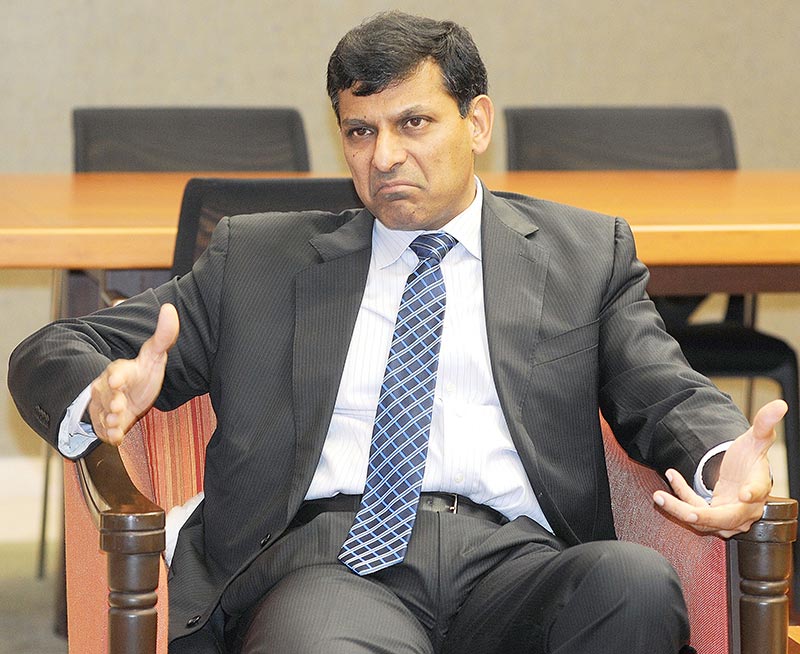Three years ago, all emerging markets including India suffered a huge outflow of dollars. The US Federal Reserve gave notice of ending quantitative easing, leading eventually to higher US interest rates that would attract money from everywhere. The Sensex collapsed, and the rupee crashed from Rs 55 to Rs 68 per dollar. The RBI saved the situation through a special NRI forex deposit scheme with high, guaranteed interest rates. Repayment of around $26 billion of NRI deposits is due between now and December. If NRIs withdraw rather than reinvest their deposits, the rupee will fall.
Provided this is not too steep, Commerce and Industry minister Nirmala Sitharaman will smile. Exports have fallen almost continuously for 20 months, and Sitharaman blames an over-strong rupee. Many distinguished economists also say the rupee is overvalued, hitting exports and industrial production. They recall that from the mid-1990s to 2005, the RBI kept constant India’s REER (Real effective exchange rate), which is the exchange rate adjusted for inflation.
Since 2004-05, the REER has appreciated 25% against 6 major currencies, and by 13% against 36 currencies that include India’s major trade competitors. Please reverse that, say the critics.
No, said, former RBI governor Raghuram Rajan, let the market decide the exchange rate. Weakening the rupee would raise import prices and stoke inflation, causing distress and eroding some of the attempted export boost. Two major studies (Rangarajan and Mishra, Aziz and Chinoy) had earlier shown that Indian exports were highly sensitive to global trade conditions and only mildly sensitive to the exchange rate. Rajan attributed India’s export slowdown mainly to slowing global trade, which used to grow twice as fast as world GDP but now trailed GDP. Some developing countries had depreciated their currencies sharply, yet their exports kept falling, as in India. Competitive devaluation would be a race to the bottom, he warned.
If the rupee was over-strong, it should have encouraged imports and widened the current account deficit. Instead, said Rajan, imports were falling and the current account deficit had shrunk dramatically from 4.5% of GDP in mid-2013. Indeed, right now India is probably running a current account surplus.
I find some merit in both sides in this argument. Rajan is right to say global growth matters more, and that rupee depreciation is no panacea and can stoke inflation. But the exchange rate is not irrelevant. The critics argue that the trade gap is large, but is masked by huge inflows of remittances and foreign investment, which artificially boost the rupee’s value. They argue that the exchange rate should be determined mainly by trade, not financial flows, and hence the rupee should be made cheaper. There is limited, though not overwhelming force in this argument.
Far greater problems are low productivity, red tape and high transport costs. China started its export surge with devaluation in 1993 but buttressed that for two decades with huge improvements in productivity, infrastructure and procedures. India lags far behind.
The annual Doing Business report of the World Bank gives data on the time taken for export procedures. Hungary tops the world: document compliance takes only one hour, border compliance zero hours, and transport time one hour. Despite recent progress, China comes far behind in 96th place. But India is even further back in 133rd place.
Documentary compliance for exports takes 21.2 hours in China against 41.5 hours in India; border compliance takes 25.9 hours in China against 109.3 hours in India; and transport time averages 6.7 hours in China against 27.8 hours in India. The contrast is stark and dismaying.
The ratio of rail freight to passenger fares in China is around 1 but 3.68 in India. In effect, the Indian railways heavily tax goods to subsidise passengers, and this implicit tax is not refunded to exporters. Indeed, the railway tariff for iron ore is explicitly set far higher for than domestic cargo.
Structural reform is clearly the long-term solution to fast growth. Yet it will take time, and political economy hurdles (like cheap railway fares) will not disappear overnight. In the short run, there is a case for experimenting with mild rupee depreciation.
If the coming repayment of the 2013 NRI deposits causes a sharp crash in stock and currency markets, the RBI will surely intervene. But if the rupee merely drifts down gently, the RBI should smile and do nothing. Maybe this will help exports, maybe not. Let’s watch this natural experiment.


